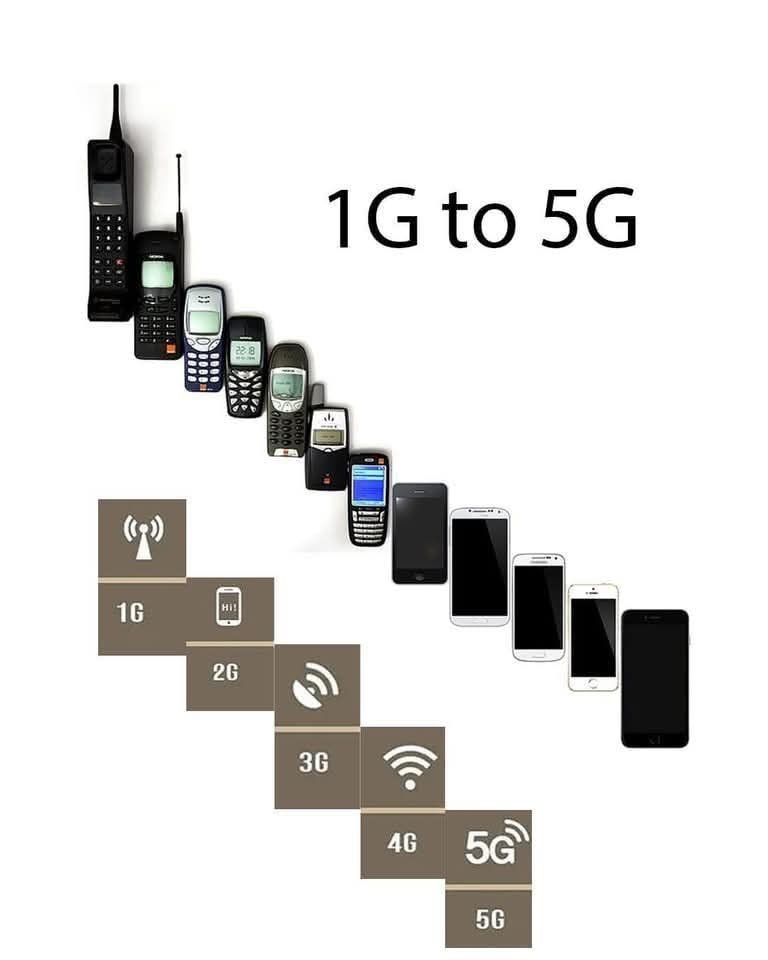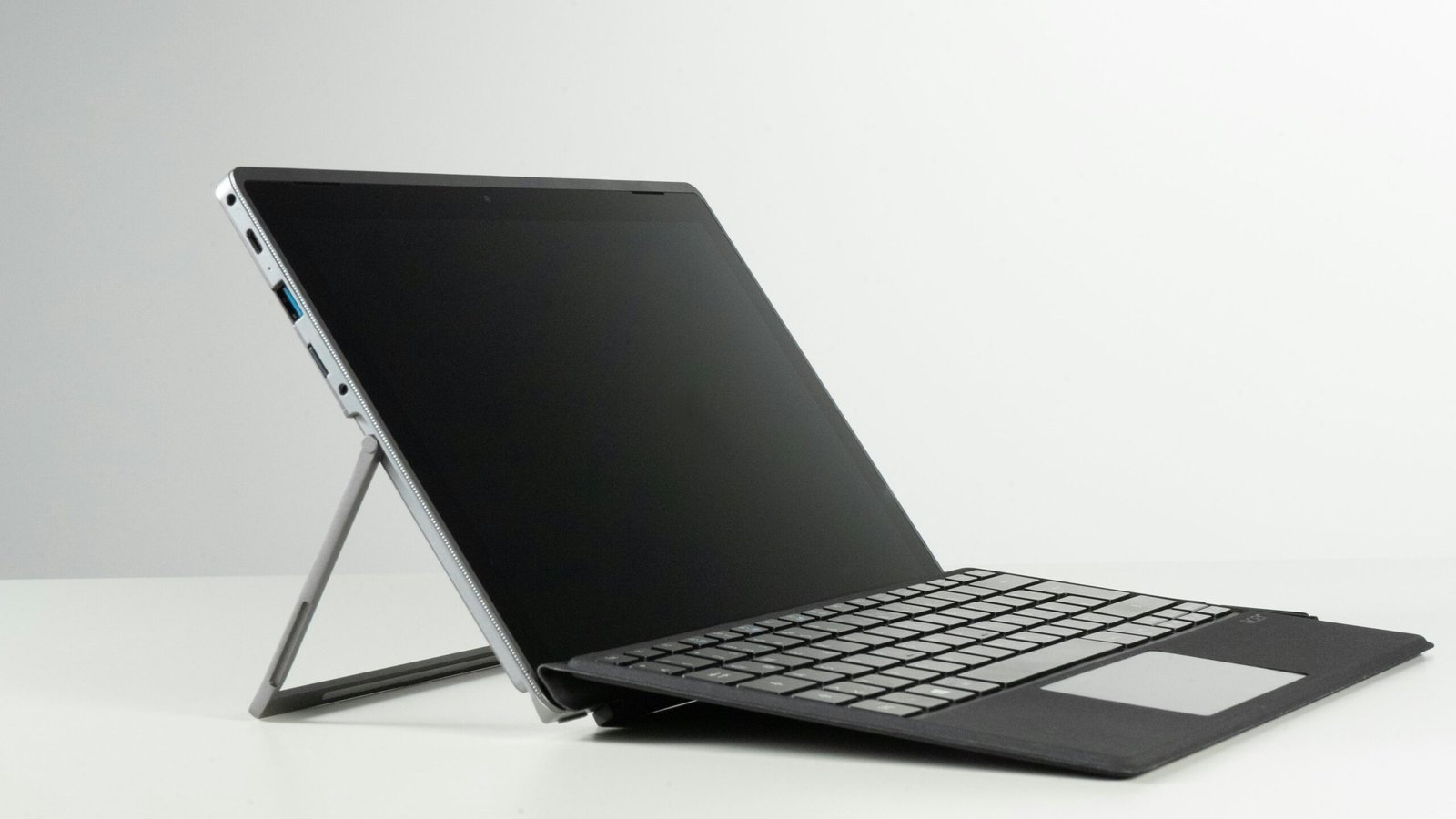Introduction to Mobile Generations
The evolution of mobile communication is a fascinating journey that reflects not only technological advancements but also changes in user needs and expectations. The concept of mobile generations is critical in understanding this progression, as each generation introduces innovative features and significant improvements in communication capabilities. Starting with the first generation, known as 1G, mobile phones transitioned from simple voice transmission to more sophisticated forms of communication that we now take for granted.
1G technology, introduced in the 1980s, primarily offered analog voice communication. Users experienced the freedom of wireless conversations for the first time, albeit with limitations in sound quality and service coverage. As consumer demand grew and technology advanced, mobile networks evolved, leading to the introduction of 2G in the early 1990s. This generation marked a shift from analog to digital communication, enabling services such as text messaging and more reliable voice calls.
By the time 3G technology emerged in the early 2000s, the landscape of mobile communication had changed significantly. 3G phones supported data services that allowed users to access the internet, stream audio and video, and utilize various applications on their devices. This paved the way for smartphones and more interactive experiences. Following this was the 4G generation, launched in the 2010s, which brought remarkable improvements in data speed and connectivity. Users could now enjoy seamless streaming of high-definition content and a plethora of mobile applications, fundamentally altering how we interact with technology.
Today, we stand on the brink of a new era with the introduction of 5G technology. This latest generation is set to revolutionize mobile communication further by providing unprecedented speed, capacity, and low latency. As we delve deeper into the characteristics and impacts of each generation, it becomes evident that these technological transitions are not just upgrades; they are transformative shifts that influence various aspects of modern life, from personal communication to industrial applications.
The Birth of 1G: Analog Beginnings
The late 1970s and early 1980s marked a significant milestone in the telecom industry with the launch of the first generation of mobile phones, commonly referred to as 1G. This era was primarily characterized by the use of analog signal technology enabling voice-only communication. The initial commercial mobile phone networks, including the Advanced Mobile Phone System (AMPS) introduced in the United States, laid the groundwork for mobile telecom by allowing users to communicate wirelessly for the first time. The innovation facilitated greater mobility, a leap from traditional landline phones, and became a symbol of advanced technology during that period.
1G networks utilized analog transmission, where voice signals were converted into continuous wave signals for transmission. This method, while revolutionary, had inherent limitations. The quality of voice calls was susceptible to interference, which often resulted in poor call quality and dropped connections. Additionally, the capacity of 1G networks was limited, restricting the number of simultaneous users. As a result, 1G systems often faced congestion during peak usage times, and the devices were bulky, quite heavy, and not user-friendly by today’s standards. This initial model of mobile communication necessitated further advancements, leading to the development of newer generations, specifically designed to overcome the constraints of their predecessors.
Despite its limitations, the societal impact of 1G technology was profound. The convenience of being able to make calls without the restrictions of wires started to reshape social interactions and business dynamics. Mobile phone adoption began to soar, heralding a shift in how people communicated. The 1G phone era set the stage for the subsequent progression towards digital communication as consumer demand for better connectivity and features increased, paving the way for 2G technologies and beyond. Each development has continuously transformed the landscape of mobile communication, showcasing an ongoing quest for enhanced connectivity.
The Transition to 2G: Digital Revolution
The shift from 1G to 2G marked a significant milestone in mobile communications, initiating the era of digital technology in the early 1990s. The primary foundation of this transition was the introduction of digital signaling, which dramatically improved call quality compared to the analog systems of 1G phones. This advancement allowed for more efficient use of the available frequency spectrum, enabling service providers to accommodate a greater number of users simultaneously.
One of the most impactful innovations of this period was the introduction of the Global System for Mobile Communications (GSM). GSM not only enhanced the quality of voice calls but also laid the groundwork for various supplementary services. Importantly, it fostered the development of Short Message Service (SMS), which transformed the way individuals communicated. The advent of SMS allowed users to send text messages easily, facilitating a form of communication that became widely popular and continues to be used today.
Moreover, 2G technology introduced basic data services, paving the way for mobile internet access. While initially limited, these data capabilities began to enable functionalities such as email and rudimentary web browsing, thus marking the beginning of mobile data as a crucial component of cellular communication. The availability of such services provided the foundation for subsequent technologies and applications, evolving the mobile phone from a basic communication device into a multifunctional gadget.
As users embraced these innovations, the demand for more advanced mobile capabilities grew, increasing the pressure on operators to improve infrastructure and explore new technologies. This period not only redefined user experiences but also set the stage for the remarkable advancements that followed, leading ultimately to the development of 3G and 4G networks and laying the groundwork for the future 5G phone era.
The Surge of 3G: Data Connectivity and Mobile Internet
The introduction of 3G technology in the early 2000s marked a significant turning point in the realm of mobile communication. This generation of mobile networks brought forth enhanced data transmission speeds, enabling users to access mobile internet services with unprecedented efficiency. The leap from 2G to 3G represented a shift from primarily voice communication to a landscape where data connectivity became equally critical. With the ability to transmit data at speeds ranging from 200 Kbps to several Mbps, 3G systems allowed for more than mere voice calls, transforming how individuals interacted with technology and each other.
One of the hallmark features of 3G was its support for multimedia services, paving the way for streaming audio and video content directly to mobile devices. For the first time, users could watch videos on their phones, listen to music, and share images instantly without needing a computer. This evolution fostered a new era of mobile entertainment and social engagement, facilitating real-time interaction and sharing among users. The mobile web browsing experience saw a dramatic improvement as well, with 3G networks providing the necessary bandwidth for more complex and visually appealing websites, leading to greater demand for mobile applications.
As a result of these advancements, 3G technology significantly impacted businesses by facilitating mobile commerce and communication. Companies began to harness the capabilities of 3G phones in various sectors, enabling online transactions and customer interactions to occur on the go. The workplace began to embrace mobility, empowering employees to work from virtually anywhere with internet access. The proliferation of 3G technologies initiated the transformation of everyday mobile devices into powerful tools for communication, business, and personal connectivity, setting the stage for the further evolution seen in subsequent generations, particularly with the emergence of 4G and 5G networks.
The Leap to 4G: High-Speed Wireless Revolution
The transition from 3G to 4G networks marked a pivotal moment in mobile communication, ushering in a high-speed wireless revolution that fundamentally changed how users interacted with their phones. Launched around 2009, 4G technology, particularly through Long-Term Evolution (LTE), provided substantial improvements in data transmission rates, reaching speeds up to ten times faster than its predecessor. This enhancement enabled seamless browsing, quicker downloads, and enhanced user experiences across various applications.
One of the most significant advancements brought by 4G networks was the development of robust app ecosystems. With the improved bandwidth and speed, mobile application developers could create more sophisticated and data-rich applications that optimized the capabilities of smartphones. Users experienced an upsurge in app functionality, ranging from social media interaction to mobile banking and gaming, all made feasible through the enhanced speed that a 4G phone could provide.
Moreover, 4G networks transformed user experiences in streaming and real-time applications. The capability to stream high-definition videos without buffering or interruptions revolutionized the way content was consumed. Services like Netflix, YouTube, and various music streaming platforms thrived as users sought the best mobile content experiences without the limitations imposed by slower networks. This level of demand fostered innovations, allowing developers to launch new services that leveraged real-time data, further cementing the role of mobile devices as essential tools for everyday life.
The rise of 4G was significant not only in terms of speed but also in shaping user expectations. People began to rely heavily on their phones for daily tasks, prompting a shift in telecommunications strategies and investments toward improving network infrastructure. As high-speed wireless technology became more mainstream, it set the stage for further advancements, including the upcoming leap to 5G, which promised to build upon the solid foundations laid by 4G.
5G: The Current Frontier of Mobile Technology
- WHY IPAD — Colorfully reimagined and more versatile than ever, iPad is great for the things you do every day. With an al…
- IPADOS + APPS — iPadOS makes iPad more productive, intuitive, and versatile. With iPadOS, run multiple apps at once, use…
- FAST WI-FI CONNECTIVITY — Wi-Fi 6 gives you fast access to your files, uploads, and downloads, and lets you seamlessly s…
Fifth-generation (5G) mobile technology represents a significant advancement in telecommunications, offering many improvements over its predecessors, including the first generation (1G) to the fourth generation (4G). One of the defining characteristics of 5G is its ultra-low latency, which can be as low as one millisecond. This rapid communication speed facilitates real-time interactions critical for various applications, from gaming to autonomous vehicles.
Moreover, 5G technology boasts significantly increased capacity, enabling it to support a larger number of connected devices simultaneously. This is particularly advantageous in our increasingly connected world where the Internet of Things (IoT) is becoming paramount. With a 5G phone, users can connect numerous smart devices without experiencing slow-downs, thereby enhancing daily convenience and efficiency. This capability is set to influence numerous industries, driving innovation in sectors such as healthcare, transportation, manufacturing, and entertainment.
In the realm of healthcare, for example, 5G connectivity could facilitate telemedicine and remote surgeries, where precision and timing are crucial. Medical professionals can leverage high-definition video streams and real-time data transfers to improve patient outcomes. Similarly, in the entertainment sector, consumers can expect more immersive experiences through augmented reality (AR) and virtual reality (VR) applications that demand higher data speeds and minimal lag.
Additionally, 5G is ushering in advancements in smart cities where interconnected technologies can improve urban management through real-time data collection and analysis. The potential of a 5G phone extends beyond merely faster internet access; it opens up a realm of possibilities that could redefine lifestyle and industry practices alike.
Ultimately, as 5G technology continues to roll out globally, it holds the promise of transforming our interaction with connectivity, paving the way for innovations yet to be imagined.
Comparative Analysis: 1G to 5G Technologies
The transformation of mobile communication from 1G to 5G represents a remarkable journey in technological advancement. Each generational leap has brought about notable improvements in speed, capabilities, and technical architecture, fundamentally altering how users interact with mobile phones. The first generation, known as 1G, emerged in the early 1980s, primarily enabling voice calls. Characterized by analog signal transmission, 1G systems provided poor audio quality and limited security. Nonetheless, this technology laid the groundwork for subsequent developments in mobile communications.
As we progressed to 2G technology in the early 1990s, the introduction of digital signals brought forth enhanced voice quality and the first digital services such as SMS. This generation marked a significant turning point, setting the stage for more advanced applications and services. With 3G technology arriving in the early 2000s, mobile communications saw an exponential increase in speed, enabling internet access and multimedia functionalities. This new architecture allowed users to leverage web browsing, streaming, and video calls, shaping the expectations of mobile users considerably.
Advancing further, 4G technology, launched in the late 2000s, significantly pushed the boundaries of speed and capacity, enabling high-definition video streaming and robust mobile broadband capabilities. Users transitioned their needs towards data-intensive applications, prompting smartphone manufacturers to adapt and innovate accordingly. The current generation, 5G, represents a culmination of these developments, providing lightning-fast download speeds, minimized latency, and the ability to connect a massive number of devices simultaneously. This technology not only enhances user experience but also opens doors to advancements like smart cities, the Internet of Things, and augmented reality. Each generation, from the rudimentary 1G phone to the modern 5G phone, has shaped user behaviors and expectations in profound ways, paving the path for future innovations.
The Global Impact of Mobile Generations
The journey from 1G to 5G mobile technology illustrates major advancements that have profoundly impacted global communication. Each generation has ushered in new capabilities that stretch beyond mere connectivity, influencing economies, cultures, and social structures worldwide. The first generation, 1G, primarily focused on analog voice communication, enabling people to make phone calls without being tethered to landlines. This initial shift laid the groundwork for more mobile participation in social and economic interactions.
As technology progressed to 2G and then 3G, mobile devices began supporting text messaging and internet access, introducing a level of convenience that transformed consumer habits. The ability to send SMS messages and access emails on 3G phones marked the beginning of a mobile-centric lifestyle, allowing users to stay connected no matter their location. This transition not only enhanced personal communications but also revolutionized business operations, enabling quicker decision-making and increased productivity.
With the introduction of 4G, mobile internet became faster and more reliable. Streaming services, social media, and various mobile applications flourished as a result, altering cultural norms around communication and entertainment. Users spent more time on their devices, leading to a rise in digital economies and the gig economy, where mobile technology allowed individuals to offer services and freelance work more efficiently.
Now, with the arrival of 5G, the mobile landscape is set for radical transformations. This generation offers significantly increased data speeds and lower latency, enabling advanced applications such as the Internet of Things (IoT), augmented reality, and smart cities. Such innovations have the potential to enhance economic productivity, foster new industries, and shift societal dynamics towards an increasingly connected world. The ongoing evolution from 1G to 5G illustrates how mobile technology not only reshapes personal interactions but also drives larger socioeconomic changes worldwide.
Future Projections: What Lies Beyond 5G?
As the world continues to embrace the rapid evolution of mobile communication technologies, the transition from 1G to 5G represents just a segment of a broader journey. With 5G already revolutionizing connectivity through higher speeds and lower latency, attention is now turning towards future technologies, including the anticipated 6G. This next generation of mobile communication is expected to build on the achievements of its predecessor, introducing even more sophisticated features that promise to enhance user experience further.
6G is projected to roll out by the 2030s, potentially offering data rates of up to 100 Gbps, heights that exceed current capabilities dramatically. This advancement could facilitate the development of real-time holographic communication, seamless integration of virtual and augmented reality, and even advancements in artificial intelligence across mobile devices. The anticipated enhancement in mobile technology is more than just incremental; it signifies a qualitative leap that could redefine the very nature of communication.
With the potential deployment of 6G, we may also witness significant improvements in the security of mobile networks. As concerns around data privacy and cybersecurity grow, future phone technologies will likely implement advanced security protocols to safeguard user information from threats. Moreover, the advent of ubiquitous connectivity, where every device is interconnected effortlessly, is expected to create hybrid ecosystems in which mobile phones and IoT devices collaborate to enhance daily life.
The implications of these advancements extend beyond technological marvels; they hold the potential to reshape societal interactions fundamentally. With enhanced connectivity, educational and economic opportunities may become universally accessible, bridging gaps that have historically existed. As we venture into this exciting frontier of mobile communication, the question arises: how will our lives change when communication technology takes yet another leap forward from the transformative 5G phone era? Only time will tell, but the prospect of these developments remains a tantalizing promise for the future.






